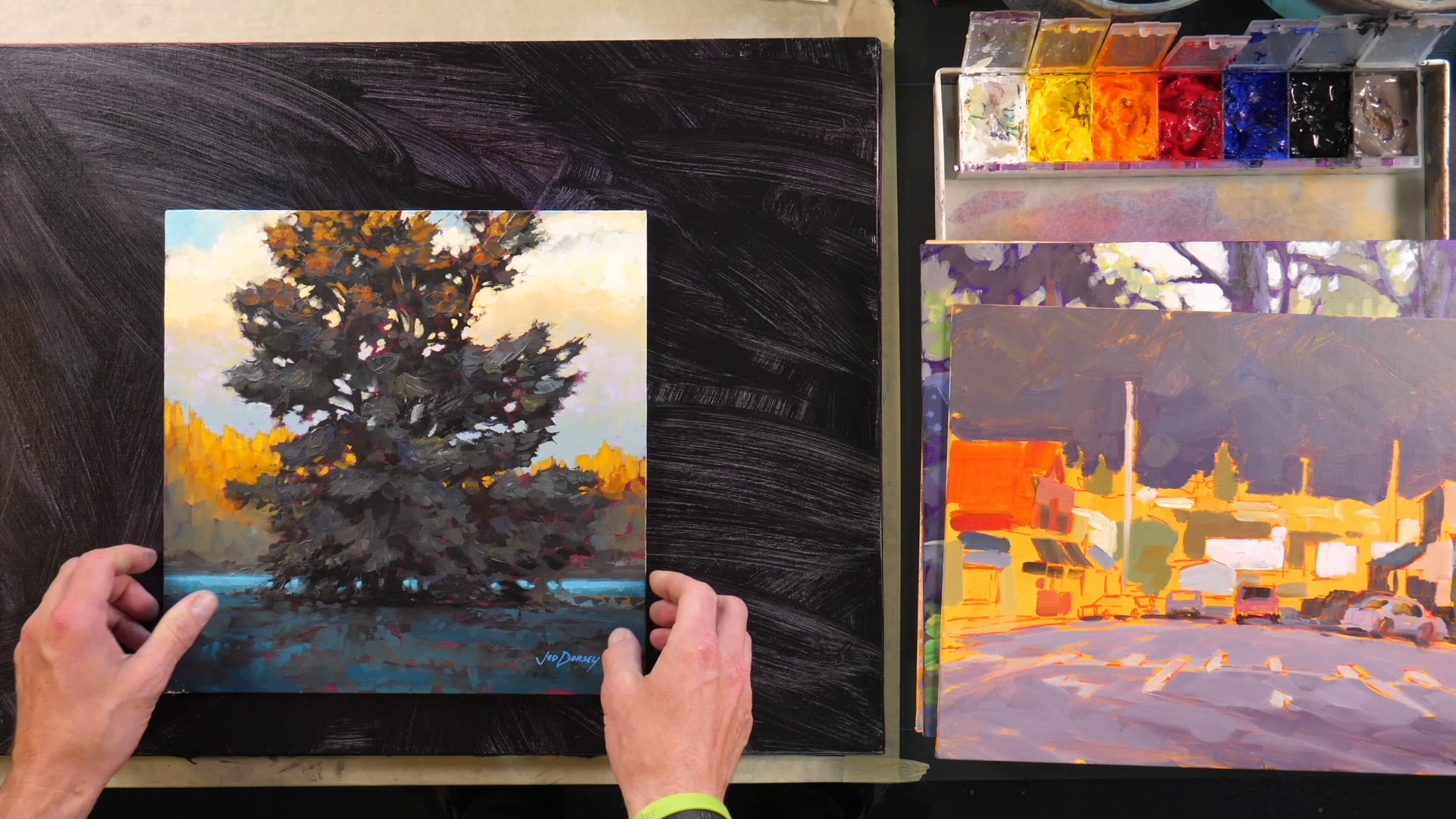Which color canvas should YOU paint on?

By Jed Dorsey
One of the questions that I get asked the most is, "How do you choose which color of canvas to paint on?" Or "When you’re prepping your canvas, why do you choose the color that you do?" It’s a great question! The color of canvas you choose has a huge impact on the final look and feel of the painting so it’s important to understand how certain color choices affect your work.
There’s a lot of variety out there. I could choose a very bright red, or I could choose something darker, like a purple or a black. If you know me, you know I paint on lots of different colors. I paint on bright surfaces like orange or purple. I paint on dark surfaces like black. Once in awhile, I’ll paint on a white canvas and do washes over the top as I’m starting out. Very rarely though will you see me painting directly on a white canvas without toning the canvas with some sort of color first.
How do you choose the color? Is it based on the painting? Is it based on the subject? It’s a warm day – do I use warm colors? It’s a cool day – do I use cool colors? I don’t have a definitive answer to that. However, I do have a few different paintings here and I will show you what the effects of using a certain color have on a painting. I’ll also explain how that might impact your decision in your choosing of those colors.
Here’s a little painting that I did:

You can see that the underpainting was a pinkish color. It was probably Quinacridone Magenta with a tiny bit of Dioxazine Violet mixed in. You can see that I left some of the pink showing through. It affects the overall feel of the painting. This was an evening scene looking towards the sunset. There is a hint of a light green color that looks good with the pink color as it's on the opposite side of the color wheel.

This is another canvas that was toned with a darker red and kind of pinkish color. It’s probably the same color from the first example. The sky is in this scene is pretty light. The rest of the scene is not super dark but those little bits of reddish color come through and give a cool effect to this painting.
Here’s another scene I started but haven’t finished yet:

The scene is a very gray, moody day. It was a dark day - overcast, dark clouds, lots of shadows - but this strip of these buildings was being hit with this late sunlight and it was very striking. I decided to use a brighter color for the background and I covered it up a lot with subdued colors.
Here’s a painting that is done using a Dioxazine Violet wash – so the canvas is toned a purplish color:

In this painting, you can easily see what that effect is. You can see the purple coming through all over the painting.
Below is a snow scene that was done on a very bright orange and you can see lots of that orange poking through the painting:

A lot of these paintings are demonstrations and are done for different reasons to show different techniques or skills. Below is a painting that I did recently as a demonstration. I started with a black canvas:

Painting on black does not mean your scene HAS to be a dark scene, although you can see that the overall tone in this painting is darker and deeper than the previous painting. With the previous painting (the snow painting), I had to intentionally add all the DARK areas whereas with this alley scene I had to intentionally add all the LIGHT areas because I was painting on a black canvas.
I don’t know exactly what you’re going to be painting and I don’t know what your scene is, but I would encourage you to pick a scene and do an experiment where you choose three different colors and tone your canvas 3 different colors. Choose a light color (like yellow or orange), a midtone color (like midtone gray) and a dark color (like black).
Paint the same scene on those three different canvases. I think you’ll find that the overall feel will differ a lot between the canvases and you'll face different challenges with each one. The way that you approach the painting will change a little bit. You might have to put more effort into bringing the light out in those darker canvases than on the canvas that’s very light. With the light canvas you might need to put more effort into grounding the painting and bringing the darks out. It just depends on the overall mood of the painting, maybe the mood you’re in, and the scene you’re painting.
I hope this was helpful to you friends and I'll see you next time!
Previous Post: Questions & Answers: Learning to Paint with Jessica Green




